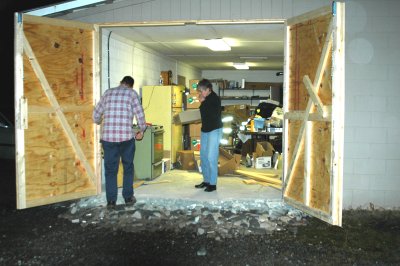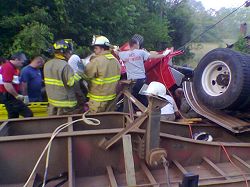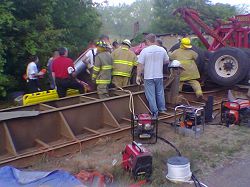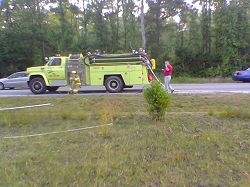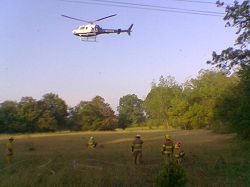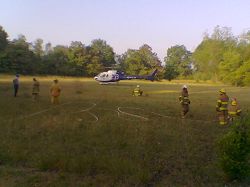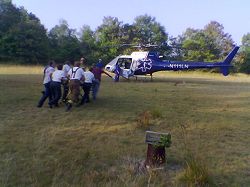This is Truck #3, the stepchild, some might think, compared to the
new tanker. It's actually our oldest truck, and with its peculiarities and difficult driving, it's not surprising that we would call it #3. Nonetheless, and especially in our rural county, it's one of our most important and flexible tools. In keeping with the season, Mike and Ed organized the training session last night (and probably for a good many Thursdays to come) around using and operating it, and generally becoming reacquainted after the winter.
We were supposed to dress for the occasion. The season is wildland fire season, of course, as plants grow and temperatures climb and rain doesn't fall. Ed is in proper uniform - our lightweight wildland fire yellows and greens, with helmet. Glenn is protecting his eyes. They're messing with the generator, which is supposed to operate the krieg lighting, which some of us contemplate may actually have seen use in World War II.
The open compartment behind the cab is storage of various implements of destruction - McLeod rakes, shovels, fire rakes, and ...flappers. I should have taken a photo of the flappers. You've seen old photographs of pioneer women beating out a prairie fire with the household broom? That's sort of what a flapper is like. As TUF says, we have the entire free world's supply of flappers cornered right here in WVFD.
Back of the storage compartment is that trapezoidal part of the truck that Ed and Glenn are sitting on. That's the water tank, and it holds a respectable 900 gallons of water. That's another reason you don't make sharp turns.
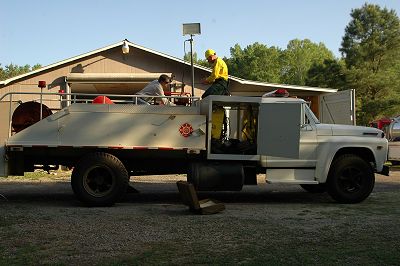
The truck is usually referred to as the "knocker", I guess because it's used to "knock down" brush fires, and we also refer to it as the "brush truck", if we can't remember its ordinal. It's a joy to drive - it has no power steering. As FC Mike says, you don't make sharp turns in this baby, you *can't* make sharp turns. However it will go places we wouldn't want to take the other two trucks, and it does hold a complement of tools that we wouldn't ordinarily have at a structure fire.
That round thing at the back is a hose reel, for booster hose, which is sort of like super duper garden hose. We put another 50 feet on last night, as well as another 100 feet of conventional firehose for those hard to get places.
Unseen to the left of the hose reel is the pump itself. It's external, puts out quite a good stream, and a lot of noise. We emptied the entire tank last night practicing with it. Then refilled it from the tanker (since no one wanted to drive the knocker over the county line to fill it from a hydrant).
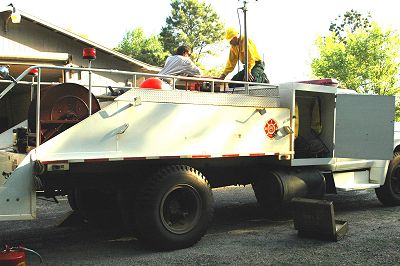
The knocker doesn't live in the spacious bay to the right in this photo. That's for the tanker. The knocker lives in the space you can barely see to the left of the open bay, in what we used to refer to as our kitchen.
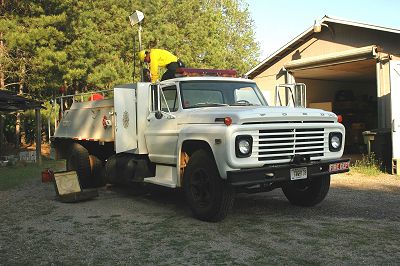
I think I'll repost a photo from over a year ago, just to be sure everyone knows -
we used to have a kitchen, but gave it up because we needed the space to shelter a truck. I think that even in Oglethorpe County, there can't be many who would be able to claim this.
